A greenhouse helps to get an early harvest of many vegetables, including tomatoes. However, even in a specially designed space with all the necessary conditions, gardeners are not immune to crop loss due to heat. Growing vegetables in southern European regions carries the risk of overheating, sunburn, and plant death.
How to protect tomato seedlings in a greenhouse from heat, what steps to take if the bushes become wilted and the leaves show signs of burns — you will learn from our article, supplemented with photo materials.
Table of contents
What to Do If Tomatoes in the Greenhouse Have Burned
Tomatoes are perhaps the most popular crop in Europe, grown both in open fields and in greenhouses. Those without a garden cultivate them on balconies and windowsills.
In greenhouses and polytunnels, film, polycarbonate, or glass is used to ensure good lighting for seedlings. However, having a well-equipped structure does not guarantee a bountiful harvest. Plants in enclosed spaces often suffer from overheating and excessive heat.
How to Save Seedlings
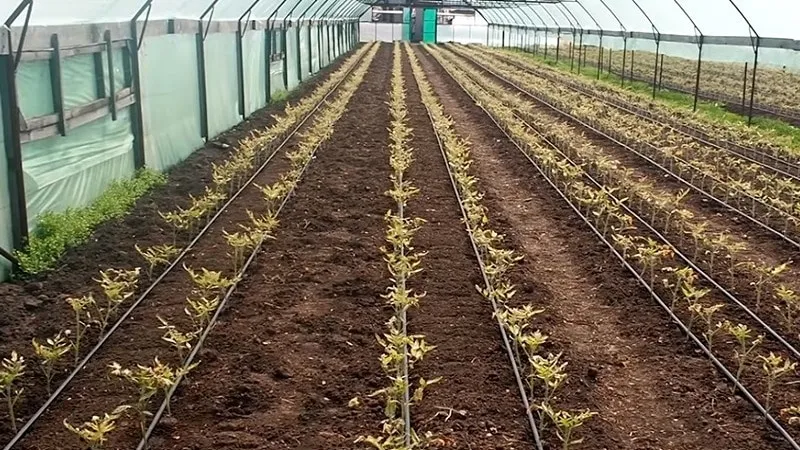
To save a plant, assess the damage. If only the leaves of the seedlings are affected, not all is lost. But if burns appear on the stems and roots, the best solution is to replace the plant.
Signs of burned tomatoes:
- wilting of the bush;
- loss of color in leaf blades;
- burns on leaves;
- flowers and fruit sets fall off;
- stunted growth;
- drying stems and roots.
First, remove damaged leaves. If there are many, do this in stages. Keep in mind that after pruning, the harvest time may be delayed by several days or even weeks.
Why Tomatoes Burn
Not all gardeners can constantly monitor their plots. But leaving plants unattended in hot weather or forgetting to water them on time is risky. Temperatures above +30°C make tomato flowers sterile. If such heat lasts more than four hours, the first signs of overheating appear.
Prolonged overheating causes leaf burns and curling. Fruits also suffer — cracks and light spots form on them. The taste deteriorates, and the flesh becomes fibrous.
At +38…+42°C, leaves fall off, stems dry out, and the plant dies. Seedlings damaged by overheating expend energy on recovery, halting their growth.
Important! Experienced gardeners know that white dry spots appear not only from overheating and sunburn. Fresh manure fertilizer can also burn seedlings.
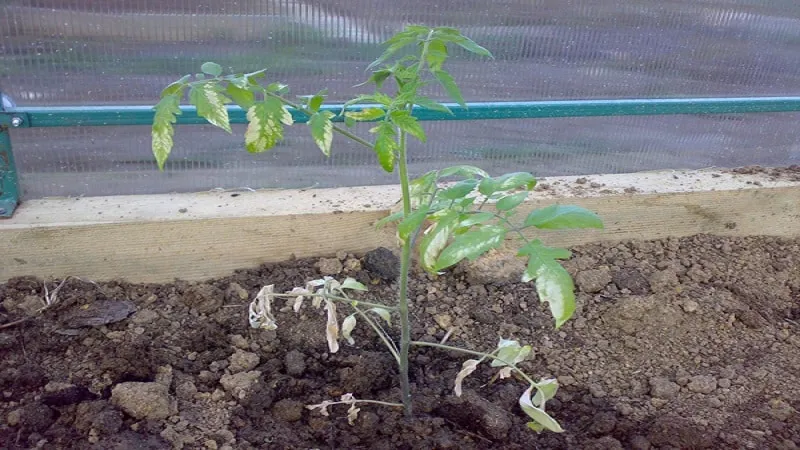
How to Prevent Tomato Burns in a Greenhouse
To protect tomatoes during hot weather, ensure cross-ventilation in the greenhouse. Opening doors and vents simultaneously not only lowers the temperature but also protects seedlings from blight.
Tomato seedlings can be made more resilient to weather conditions. Harden young plants by briefly exposing them to outdoor conditions or opening greenhouse windows more often. Start hardening when the air temperature reaches +18°C.
Why Tomatoes Wilt in a Greenhouse
Several reasons explain why tomatoes struggle in hot weather:
- Seedlings are unprepared for environmental changes. Plants are transplanted without prior hardening.
- Seedlings were grown indoors on north-facing windows.
- Insufficient ventilation during hot periods.
- Failure to monitor temperature levels.
- Prolonged absence from the garden.
How to Save Tomatoes in Hot Weather
Wilted tomato bushes can be saved. It’s crucial to establish a favorable temperature regime. Daytime temperatures should not exceed +23…+25°C, and nighttime temperatures should stay around +18°C.
A growth stimulant like "Biostim" can help revive damaged plants. It accelerates the regrowth of green mass and improves stress resistance. Use one ampoule per 5 liters of water. Spray the foliage using a misting bottle. For prevention, apply "Biostim" every two weeks.
Important! To avoid additional burns, spray plants in the morning or evening.
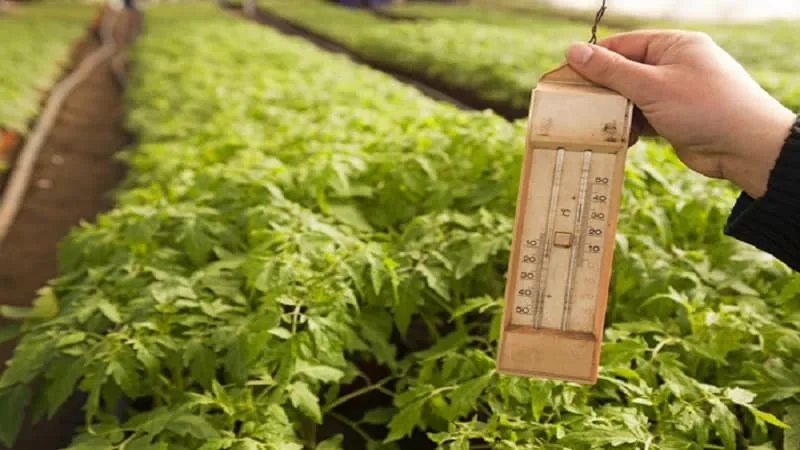
Foliar feeding also aids recovery. Use mineral fertilizers containing a full range of micronutrients. Apply twice, with a two-week interval.
Some gardeners use plastic film in greenhouses. However, it allows sunlight to pass through and retains heat. What to do if tomatoes start burning under the film? First, replace the covering material with white non-woven fabric, such as spunbond. Then water the seedlings generously and leave the greenhouse open overnight.
Remove damaged leaves. If the roots are affected, the plant may produce side shoots later. However, many gardeners prefer replacing weakened plants with healthy ones.
Overheating is especially dangerous for plants planted at an angle. Their roots are closer to the surface and suffer from heat. To prevent this, mulch the soil around the stem thickly.
Saving Tomatoes from Overheating
Several techniques can quickly lower greenhouse temperatures and save tomatoes: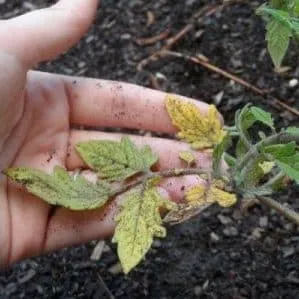
- Shading. On extremely hot days, shade the greenhouse with a special net, newspapers, spunbond, or white fabric. Alternatively, apply solutions to the outer surface: 200 g of chalk per 10 liters of water or 2 kg of flour per 0.5 liters of milk. Remove shading once the heat subsides.
- Watering with ventilation. Overheated plants need extra water. Water early in the morning or evening. Midday watering leads to rapid evaporation and condensation, so ventilate for at least an hour afterward. Spraying cold water on polycarbonate greenhouse walls lowers the internal temperature by a few degrees.
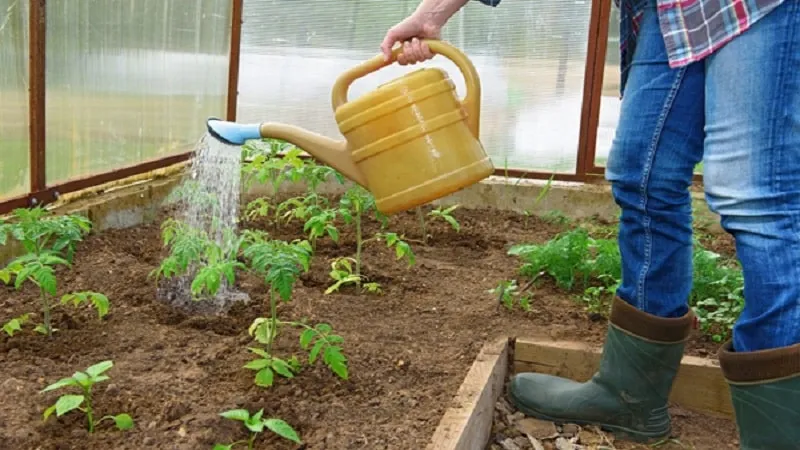
- Automatic regulator. A thermostat simplifies gardening — it triggers vent opening when temperatures rise. The downside is the high cost.
For quick relief, place buckets of compost tea or green fertilizer in the greenhouse. Fermentation releases carbon dioxide, which nourishes damaged plants.
Important! These methods apply to greenhouses. Different techniques are used for open-ground plants.
Creating Optimal Greenhouse Conditions
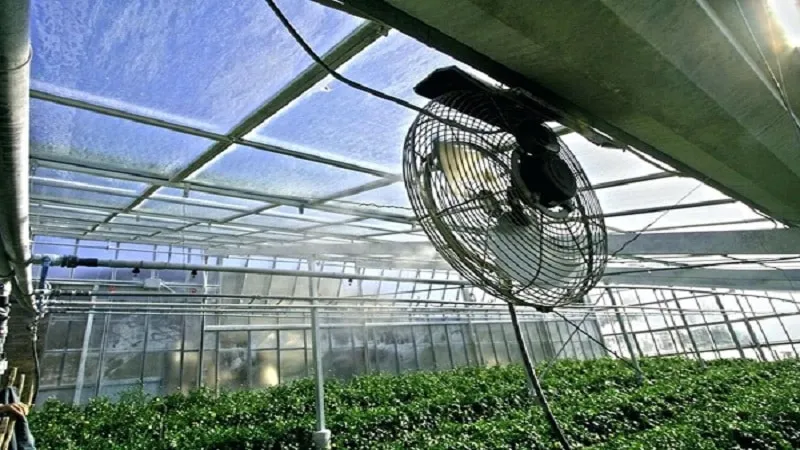
The best protection against overheating is maintaining ideal greenhouse conditions:
- Plants in greenhouses 180-200 cm tall suffer less from heat. In southern Europe, structures of this height are preferable.
- For optimal growth, daytime temperatures should not exceed +20…+25°C, and nighttime temperatures should stay at +16…+18°C. Monitor both temperature and humidity, which should be at least 60-70%.
- While excess humidity is fixed by ventilation and reduced watering, dry air requires more effort. Besides thorough watering, moisten pathways and between rows. Do this in the morning to allow evaporation during the day.
- For better airflow, install floor-level fans.
- If sunlight hits only one side of the greenhouse, place a light-blocking screen there. Tall decorative plants can serve as natural shade.
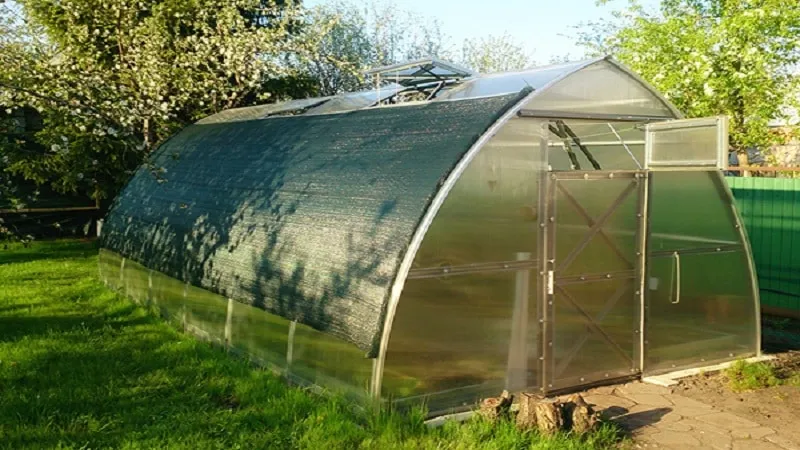
Experienced gardeners use homemade hydraulic temperature regulators. The system consists of two metal-lidded jars of different sizes connected by tubes. Fill the larger jar with water and place it near a vent; hang the smaller one on the window frame. Attach a wooden block as a counterweight.
When temperatures rise, water moves into the smaller jar, opening the vent. As temperatures drop, the liquid returns, closing the window.
Conclusion
Growing tomatoes in hot weather requires extra care. Just a few hours of neglect can leave plants wilted. Proven techniques — mulching, timely watering, soil aeration, and maintaining optimal greenhouse conditions — help prevent overheating.
Never leave tomatoes unattended in extreme heat. Without ventilation and shading, you risk losing your entire crop.







